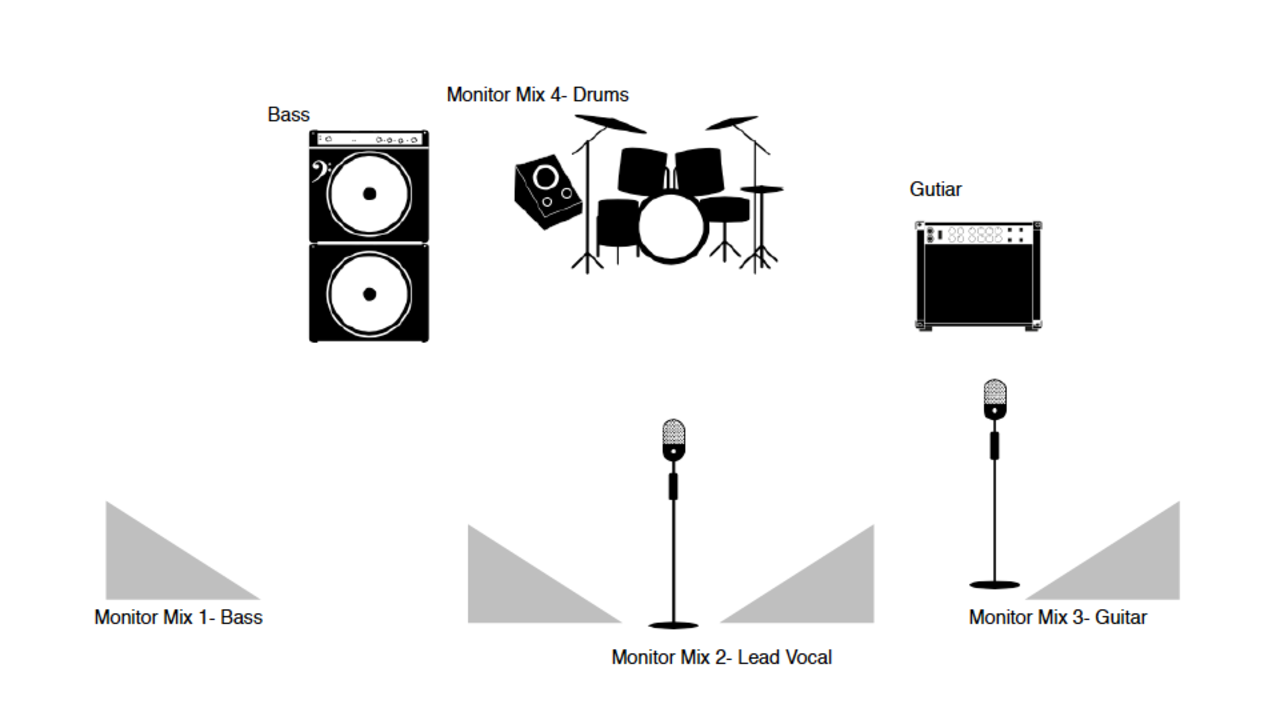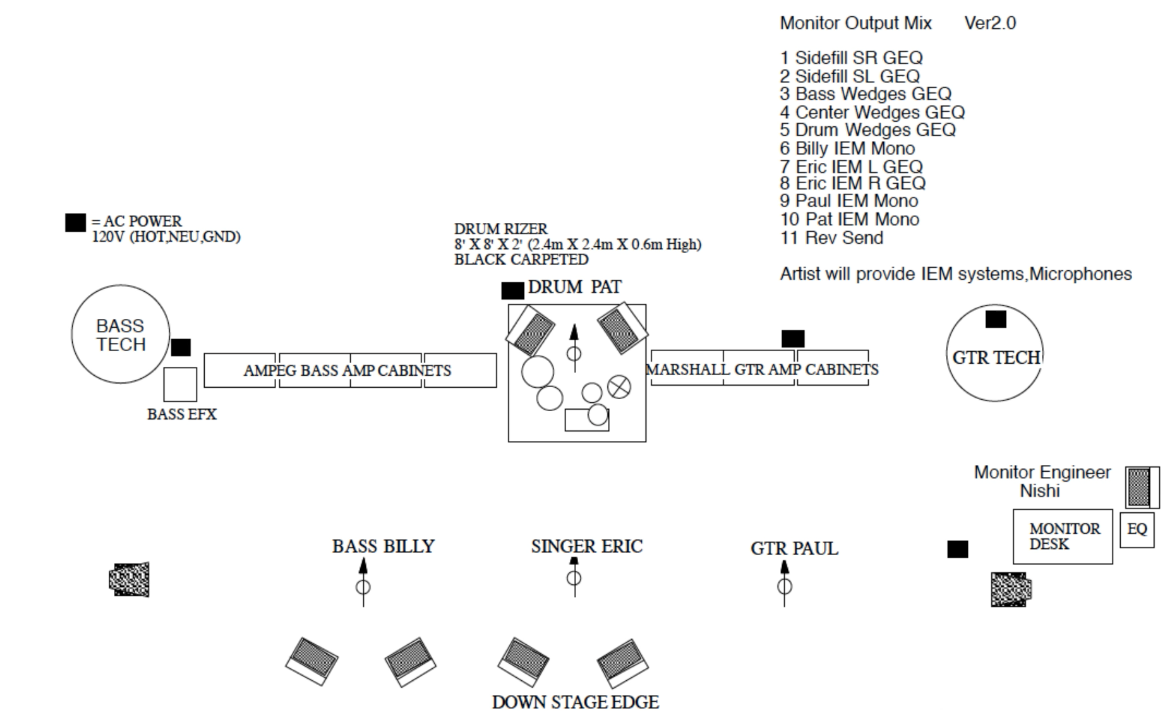Input Lists and Stage Plots
Feb 17, 2020
Input Lists and Stage Plots
When doing live shows, there are two things that can make setting up and patching the stage go smoothly and efficiently. They are an input list and stage plot.
Input Lists
An input list is essentially a list of inputs and the corresponding channels in the snake or console that they are patched into. The most basic will contain the snake channel, input, and possibly a microphone or DI preference. More advanced input lists can include sub-snake channels, color coding, location of the input on stage, mic stand preference, and any other relevant info.
BASIC INPUT LIST

ADVANCED INPUT LIST

Everything that is patched into the snake and/or console is an input. This includes all microphones, DIs, any devices for playback, as well as other audio sources. As the size and the scope of the show increase, so will the information on the input list.
Stage Plots
Another useful thing to have if you are mixing a band is a stage plot. This is a diagram showing positions of musicians, vocals, instruments, and monitor mixes on stage. Sometimes the band will provide you with these, and other times you’ll have to draw it up on the spot if you are working with a new act.
Stage plots are not often used in small productions, where, for example, you have someone speaking from the stage giving a lecture and using a single monitor or a theatrical production that only requires a few vocal microphones.
Like the input list, the stage plot can be as basic or detailed as needed. The most basic will show the position of musicians and monitor mixes on stage. More advanced stage plots can also show things like drum riser dimensions, distances between musicians, AC power drops, and any other pertinent info.
BASIC STAGE PLOT

ADVANCED STAGE PLOT

If you are the sound engineer at a venue working with different acts all the time, you will likely draw up an input list and stage plot when the band arrives and you find out what you are dealing with.
If you have a regular mixing gig with the same band and are using the house audio equipment at each venue, it will help to provide the house audio/production crew with an accurate input list and stage plot so they can assist you with mic’ing and wiring the stage. Even if you are touring with a full audio system, it’s a good idea to keep these two items current as it makes for easier troubleshooting and if you do a one-off with local production.
The input list and stage plot are two important documents that should be part of every gig. Both serve as a map, the input list is a guide for patching the snake and console, and the stage plot is a guide for patching the stage. They are also helpful in troubleshooting.
WATCH THIS VIDEO on creating stage plots and input lists.
By: Michelle Sabolchick
Get Exclusive Mixing Tips and Content That I Only Share With Email Subscribers
I hate SPAM and will never sell your information, for any reason.




